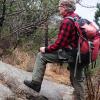Savnet person (Sist sett på Spiterstulen) / missing person in Jotunheimen
-
Lignende innhold
-
- 3 svar
- 779 visninger
-
- 0 svar
- 376 visninger
-
- 2 svar
- 1 337 visninger
-
- 14 svar
- 3 507 visninger
-
- 0 svar
- 730 visninger
-
-
Hvem er aktive 0 medlemmer
- Ingen innloggede medlemmer aktive




Anbefalte innlegg
Opprett en konto eller logg inn for å kommentere
Du må være et medlem for å kunne skrive en kommentar
Opprett konto
Det er enkelt å melde seg inn for å starte en ny konto!
Start en kontoLogg inn
Har du allerede en konto? Logg inn her.
Logg inn nå